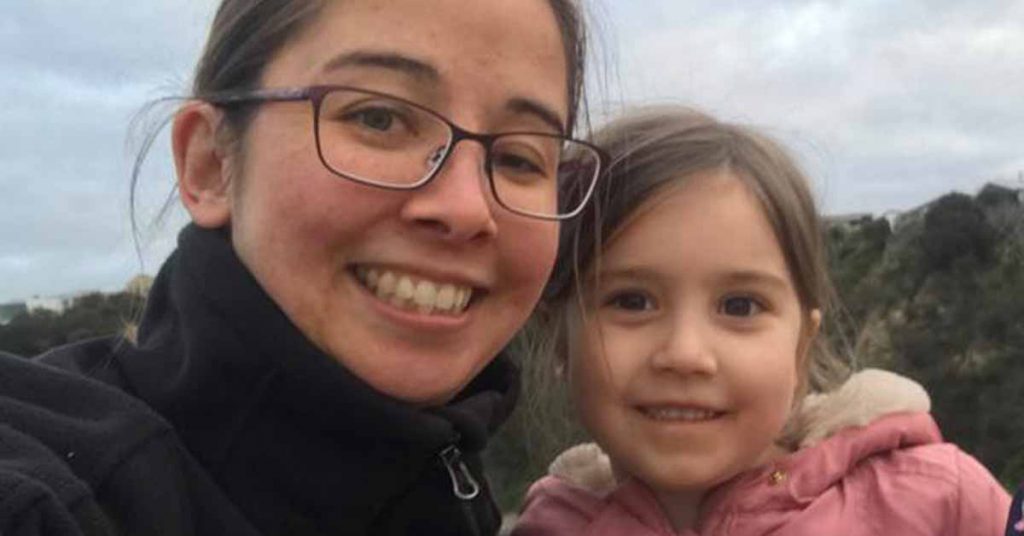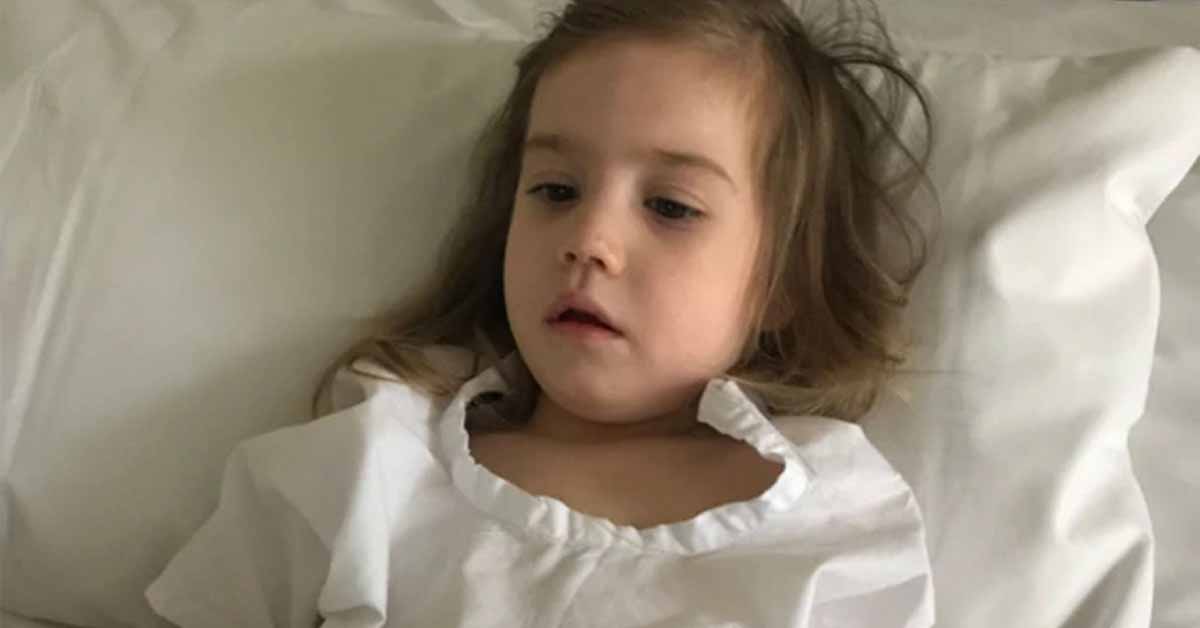Samantha was three in 2018 when she admitted to a hospital in Australia for a routine tonsillectomy.
Megan, her mom, had the usual concerns about her surgery. Would it go well? Would she be in much pain after coming out of anesthesia? But she also had an additional worry: at five-months-old, Megan was diagnosed with milk, egg, and peanut allergies.
Samantha’s mom told Kidspot:
She needs an EpiPen and her throat swells up with nuts. For dairy, she empties the contents of her stomach when she comes into contact with it, and with eggs, she breaks out in a rash – and her skin is already very sensitive from eczema.
Samantha and her younger sister, who also has allergies to milk and eggs, are never given food by anyone other than her parents because the risk of a serious reaction is too great.
I provide all of their food – it’s just easier. There are people and places I now trust, but in general, we don’t eat out. At the playground, I always keep a close eye on them. If I see someone eating nuts or peanut butter, I’ll steer Samantha away from them. It’s a big worry for us.
Before Samantha’s hospital admission, her mom filled out the usual pre-admission forms warning of her allergies. She also took the time to speak with each staff member who would be involved in caring for Samantha during her stay. She even offered to bring in all of Samantha’s food.
Said Megan:
They reassured me that it was fine, that she would get a special red band which listed all her allergies and make the staff aware that there’s extra risk in that room.
I thought, ‘Yes, it’s the hospital. It will be fine, they know what they’re doing’.
After the operation, Samantha was returned to her room and served lunch: a sandwich made with Vegemite, a spread made from yeast commonly served in Australia, often with butter. Megan inquired about the butter and was assured it was a non-dairy spread.
But on the same tray was an egg sandwich for Megan. Megan had left strict instructions that eggs not be brought into the room.
“I took it off and thought, ‘OK that’s all that’s wrong, she can go ahead and eat hers’,” said Megan.
Samantha managed to eat half of the sandwich despite her achy throat.
Said Megan:
A few minutes later, she climbed onto her dad’s lap for a cuddle and just vomited everywhere.
Even after she had her reaction, I didn’t even click that it could be from the food. That’s how much I trusted the hospital and that they had it under control. They said she would be a bit sore and nauseous from the surgery, so I assumed it was just that.

Medical staff checked Samantha but assumed her nausea was a result of the anesthesia.
“So I started to get worried about that as they were running around checking her vitals.”
At that point, it dawned on Megan that the sandwich that Samantha was served could be the cause of her distress. She addressed the medical staff about her worry but was told, “this is all normal, don’t worry.”
Samantha’s parents insisted the staff check the sandwich she was served to ensure the spread it contained was non-dairy. They were not able to confirm one way or another, as the sandwich was made by an off-site caterer.
Said Megan:
That’s when we realized what had obviously happened. My gut instinct was right. I was in shock. I couldn’t believe it. I would have hoped that if you have any medical issue, if you go to hospital that you’ll be safe there.
Samantha vomited three more times that afternoon, heaping more misery on the girl who already had a sore throat from the surgery.
Megan recalls:
She was quite upset and distraught – she kept saying, ‘It hurts, it hurts.’ It was very distressing. And with this type of reaction, we just had to let it take its course. Other than keep her hydrated, there was nothing else we could do.
I knew the surgery would be hard on her, but to have the added stress of her vomiting and being upset about it was really traumatic and hard. It made me question, ‘Did we do the right thing in having the surgery?’
Taking no additional chances, Megan brought that evening’s dinner and the next morning’s breakfast before Samantha was discharged.
To add insult to injury, the toast that the staff had brought in for Samantha’s breakfast included a pat of prepackaged butter.
“No one came to see us about what had happened while we were there,” said Megan in disbelief.
“The message to the hospital hierarchy didn’t get through until we put in a formal complaint a few days later.”
An investigation found that due to an error, regular margarine which contained milk was being used throughout the hospital in place of a non-dairy spread.
Said Megan:
They said in future that all spreads would be non-dairy and they wouldn’t have those packets of butter in the kitchen as well. And the menus would be color-coded to match wristbands.
I just wanted the same checks to be done for food like they do with medication allergies in hospital.
Megan has since become an advocate for Australia’s National Allergy Strategy. Her hope is that Samantha’s story will encourage more food allergy education and training in hospitals.
“It’s about creating awareness that it is a serious issue and teaching what to look for, because there is a lot that is misunderstood,” said Megan.
Since the incident two years ago, Megan has stepped up her vigilance and reports there have been no such incidents for Samantha or her sister.
Says Megan:
I double and triple-check everything. But now as they get older and more independent, my main worry is there is so much out there that I won’t be able to control.
Samantha’s story is every food allergy parent’s nightmare. Her mom did everything right by warning the hospital of her food allergies during pre-admission and speaking to individual staff members who would be taking care of her child. And still, the hospital managed to put her daughter in danger due to a breakdown in procedures between the hospital and the caterer.
We hope the hospital has since strengthened their procedures so that future such potentially fatal mishaps are avoided. It does go to show that these types of mishaps can occur anywhere, even in settings you believe should be safe.
We do question why Samantha was not immediately given epinephrine when it was suspected the food she was served might be the cause of her vomiting, a signal that she was having an anaphylactic reaction.
We are happy Samantha’s story has a happy ending with tragedy averted. We wish her and her family well and thank Megan for relating their story, a lesson for us all that even with vigilance, accidents (and anaphylaxis) do still happen.






I am so glad that the reaction was not more severe. This is scary and unsettling.
My daughter was also served a potentially contaminated item in a St. Paul Minnesota hospital in the immediate recovery room after an adnodectomy. I was not in the room yet. Thankfully, my always food weary, 12 year old daughter questioned the nurse enough to force her to find the ingredient list in a popsicle. Sure enough, big old “may contain peanuts” and “processed in the same equipment as tree nuts” labels.
That really reduced our confidence in the staff.